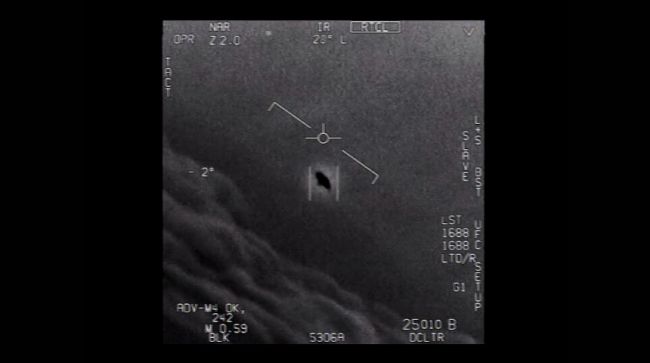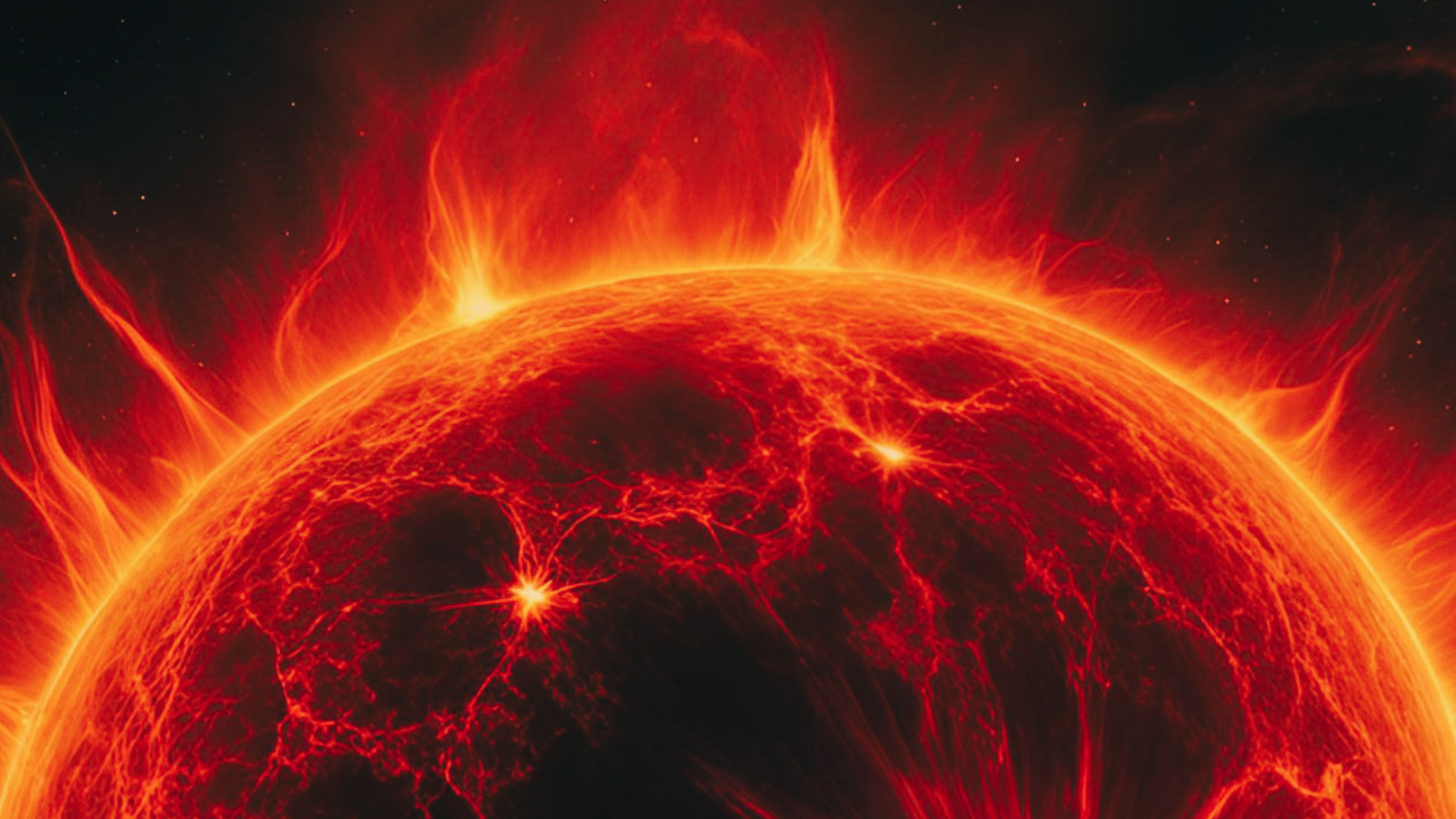Skies alive with UFOs? Government report on mysterious sightings due soon

This month, the U.S. government is set to release a UFO report put together by the intelligence community and the Pentagon, including a specially created Unidentified Aerial Phenomena (UAP) Task Force.
That task force was established to provide insight into the nature and origins of purported aerial objects, primarily reported by Navy personnel, that exhibit behavior that's tough to explain — and could potentially pose a threat to U.S. national security.
Such news has boosted to stratospheric heights the "I told you so" believers who have long argued that unidentified flying objects are skimming through our skies, piloted by extraterrestrials chalking up interplanetary frequent flyer mileage points in the process.
Related: 7 things most often mistaken for UFOs
However, are UAPs doing a disservice to UFOs? Are they really one and the same phenomenon?
Maybe UAPs are time travelers and we, Earthlings from the future, are the pilots? Or perhaps they're adventurers from far-off worlds just checking us out. Maybe UAPs are advanced high-tech drones built by other nations, or maybe they're home-built craft sponsored by some super-secret U.S. program?
For the moment, let’s put all that aside and ask: What, if anything, will the government’s UAP report reveal? And what will happen next?
Breaking space news, the latest updates on rocket launches, skywatching events and more!
Cut-and-dry report?
There are already those who say that the report will basically amount to a "nothingburger."
"I’m interested in the report, but less than optimistic anything significant will surface," said Scott Miller, chair and professor of the Aerospace Engineering Department at Wichita State University.
It will likely be a typical, cut-and-dry government report, Miller added — a review of sightings, void of conjecture, sensitive to political issues and absent of any classified information. "Of course, these characteristics will leave it wide open to criticism and opportunity," he told Space.com.
Miller suspects that many of the sightings are related to individuals or nations simply doing some "spying." Building and operating high-performance unmanned aerial vehicles is relatively easy for experienced individuals and, especially, countries. He envisions people making their own aircraft and operating them in places they shouldn’t be, such as within restricted airspace where UAPs have been sighted.
"The Chinese and Russians could easily do this sort of thing, from within the U.S., using hobby and other common resources," Miller said. "If I was them, I would make sure my spy vehicle looked otherworldly. Being seen while spying isn’t desired, but the related confusion that ensues adds to the noise of their mischief. It’s also funny to them."
No longer taboo
Ravi Kumar Kopparapu, a research scientist in planetary studies at NASA’s Goddard Space Flight Center in Maryland, said he’s hoping that a number of things happen after the UAP report is released. Firstly, the scientific study of UAPs should not be a taboo anymore.
"We should remember our history. Scientists should be able to openly talk about the detailed needs for a scientific study," Kopparapu said.
Secondly, reliable data collection and availability are paramount.
"Without complete data, the scientific study of UAP will forever be a fringe topic. Snippets of edited videos are not reliable data, and nothing meaningful can be deduced from them," Kopparapu said. Ideally, what is needed is simultaneously collected data from different regions of the electromagnetic spectrum — optical, infrared and radio, for example.
"If there is such data available already, it would need to be analyzed by appropriate experts and scientists, making sure they have comprehensive data. There may be false positives, but that is the nature of science," Kopparapu added.
Lastly, Kopparapu said there should be a coordinated effort from interested scientists of different disciplines, such as atmospheric scientists, aerospace experts, physicists and experienced engineers/technicians. Combining their talents, they’ll need to look at the data to figure out the nature of this phenomenon.
"Again, removing the taboo will significantly propel forward this particular collaborative effort among scientists," Kopparapu said.
UFO watch: 8 times the government looked for flying saucers
Solid data
More important than the Pentagon report is the need to gather solid data that is shared with the scientific community, said Robert Powell, executive board member of the Scientific Coalition for UAP Studies (SCU). The group promotes and encourages the rigorous scientific examination of "anomalous phenomena" known around the world as UAPs and UFOs, among other terms, the organization’s website explains.
The SCU was founded in 2017 and its ranks include university professors, former NASA researchers, ex-defense industry employees, and individuals out of the tech industry.
Powell said the coalition has publicly called for the release of all unclassified data associated with UAPs held by the federal government without compromising national security sources and/or methods.
"In addition, we called for the publication of data and research results from various federal agencies in the public domain in order to promote the scientific research and analysis of UAP. We maintain this position and look forward to the release of additional data by the federal government," Powell said.
'When' are they coming from?
One mind-bending possibility that warps space and time is that UAPs/UFOs are time travelers from the future. They are us.
Michael Masters, a professor of biological anthropology at Montana Technological University in Butte, is author of "Identified Flying Objects: A Multidisciplinary Scientific Approach to the UFO Phenomenon" (Masters Creative LLC, 2019).
"My general thoughts on the report is that, regardless of what comes out of it, the attention it's drawn to the UFO phenomenon — in association with all the leaked videos and images — can only help to push us closer to an understanding of what is and has been observed in our skies," Masters said.
Masters is doubtful the soon-to-be-issued UAP report will reveal all that is known about the phenomenon, or even a fraction of it.
"But regardless of the amount that is or is not divulged, any information conveyed, in accordance with the long-overdue attention this topic has garnered, can only help inch us closer to a time when the true nature of these events is fully understood and appreciated," Masters said. "I also think that, as we continue to recognize the reality of the UFO phenomenon, the question is going to innately turn from, 'Are UFOs real?' to 'What are UFOs and where, or perhaps when, are they coming from?’"
Scientific understanding
The notion of UFOs should be taken seriously, said Carol Cleland, a professor in the Department of Philosophy at Colorado University, Boulder.
"If you actually look at the history of major scientific discoveries — discoveries that change scientific thought in fundamental ways — what you find are phenomena that were there all along but not recognized for what they represent," Cleland said in an interview published by CU Boulder Today.
We'll have to wait and see what the coming UAP report says. But, Cleland said, people are generally expecting that it will characterize the sightings as unexplained, despite a variety of data gathered by sophisticated instruments and observations made by highly trained people.
If that is indeed the case, "then you have a truly baffling phenomenon," Cleland said.
"It might represent a problem with your instruments, which you should know about because that’s the kind of mistake that has potentially serious consequences, including war," she said. "Alternatively, it could represent natural phenomena that transcend our current knowledge of physical phenomena and perhaps even pose a challenge to current physical theory. That is just as important to investigate, because it might lead to major changes in scientific understanding. Finally, and this is what I dreamt of as a child, it might represent extraterrestrial technology."
Leonard David is author of the book "Moon Rush: The New Space Race," published by National Geographic in May 2019. A longtime writer for Space.com, David has been reporting on the space industry for more than five decades. Follow us @Spacedotcom, Facebook or Google+. This version of the story published on Space.com.

Leonard David is an award-winning space journalist who has been reporting on space activities for more than 50 years. Currently writing as Space.com's Space Insider Columnist among his other projects, Leonard has authored numerous books on space exploration, Mars missions and more, with his latest being "Moon Rush: The New Space Race" published in 2019 by National Geographic. He also wrote "Mars: Our Future on the Red Planet" released in 2016 by National Geographic. Leonard has served as a correspondent for SpaceNews, Scientific American and Aerospace America for the AIAA. He has received many awards, including the first Ordway Award for Sustained Excellence in Spaceflight History in 2015 at the AAS Wernher von Braun Memorial Symposium. You can find out Leonard's latest project at his website and on Twitter.
